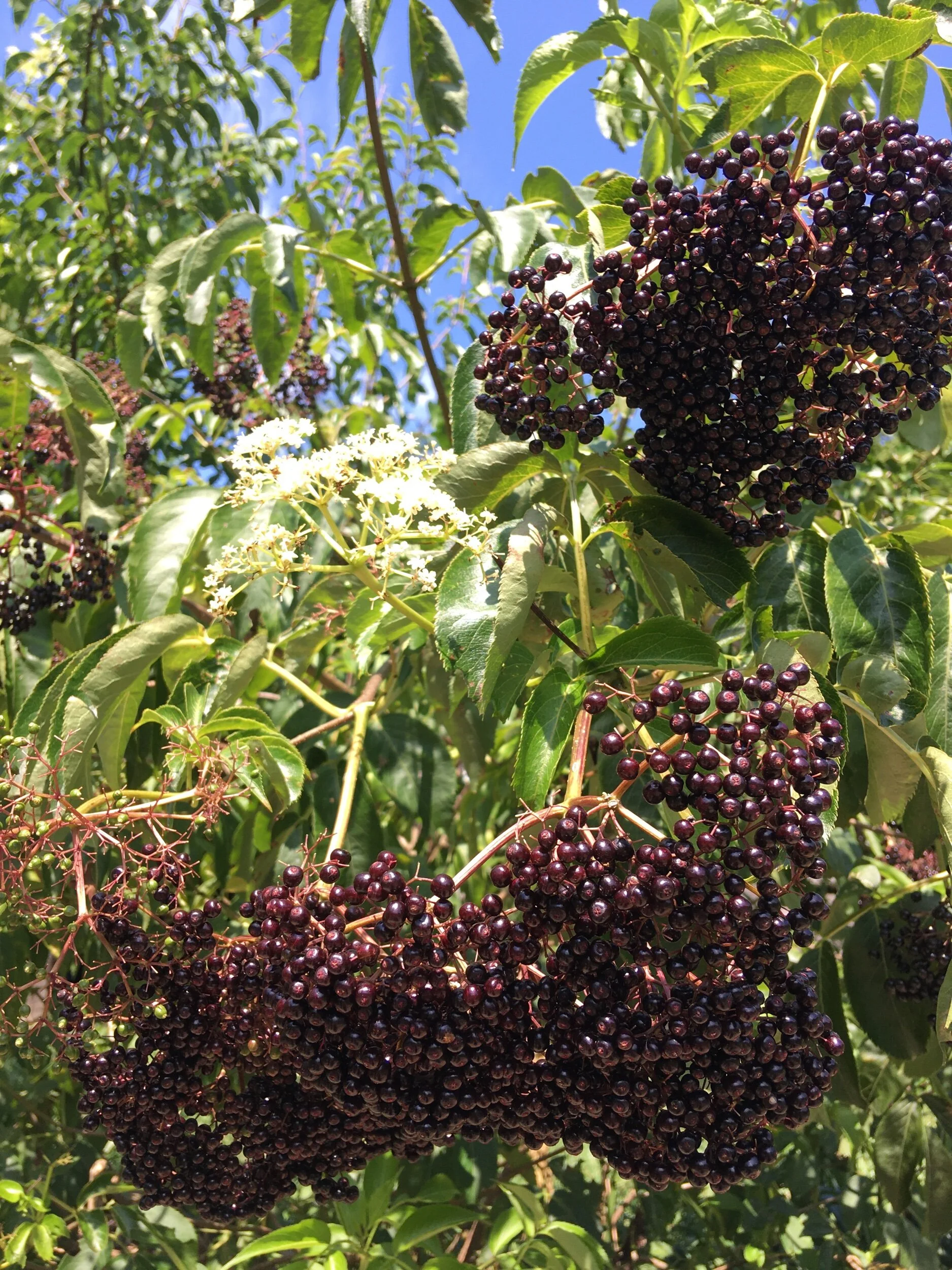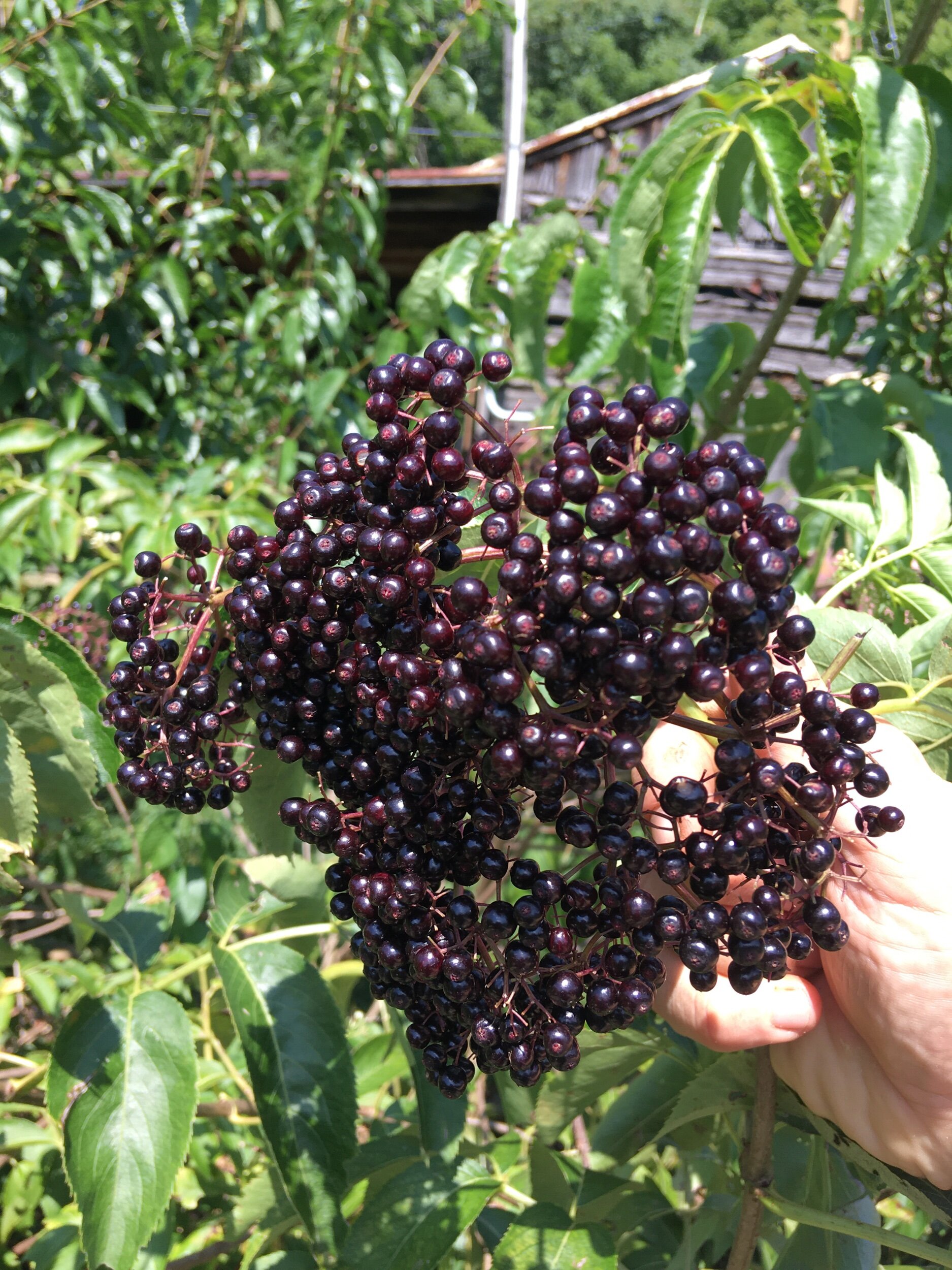Elderberry








Elderberry
Sambucus spp.
Plant for watershed medicine, for chop-and-drop mulch, for beautiful shelter, and because Elderberry is amazing!
Hardy from Zones 3-10. Up to 20 feet tall, 10-15 wide. Self-fertile!
Our forest gardens and riparian groves light up with white Elder flowers in the Spring and by Summer they become brilliant little blurs of black-purple fruit. We’re planting Elderberry all over the place. We want them because they’re one of the best native medicines for us and the land, especially for rivers and floodplains. The roots offer stability to streambanks and degraded sites. The long arching speckled stems are very lightweight, not good for building but excellent for craft to make combs, pegs, and hollowed-out for sugar tapping, whistles, and flutes. The light wood first grows amazingly fast as succulent fleshy green, which we coppice to make wonderful mulch that reinvigorates new shoots. The dense Honeysuckle family member houses birds and other animals and shades flowing water.
Almost every part of this plant has been used medicinally. Elderberry gives us incredibly healthy fruit in August to enliven our immune systems, nurture digestion, and treat colds and flu. The berries contain high levels of Vitamin A, iron and potassium, and fiber. We snap or cut clusters and freeze them whole so we can easily shake the berries off the small stems, or gently paint them across a metal grate to loosen berries into a bowl. Some plants produce up to 15 pounds worth, but our harvests haven’t yet climbed that high. Once we’ve separated the berries, we throw them all into a steamer that eventually drips out deep red juice, which we use to make cooling Summer cordial, wine, salves for burns, or syrup, which is delicious on pancakes and will help clean out your digestive system! The flowers are a bit milder, usually served as a tea to cure headaches, colds, bladder infections, indigestion, colic, and bring out sweats and break fevers (diaphoresis), among many other ailments. Steeped flowers are a softening cosmetic, or just batter them for fritters. Flowers and leaves together are a medicinal wash for sprains and bruises (including for animals); mixed with bark and twigs they ease stiff joints and inflammation. Root bark serves as a diuretic (peeing), emetic (vomiting), and for speeding up labor. Leaves sweeten up through the Fall and become palatable browse, particularly for goats (and deer enjoy the snack too), but they grow tall very quickly and soon become hard to reach, which is good for deer deterrence!
Elder (Sambucus canadensis) is an old native all over Eastern North America, parts of Canada, and even down to Panama. Indigenous communities in Native America have used Elder for thousands of years. The Cahuilla in southern California have dried berries to recook in the Winter or cooked them down into sauces that would sustain them for weeks. Traditional use includes soaking fruit and twigs to make dark dyes for basketry and heating sticks to hollow out stems to make instruments (Sambucus is supposedly derived from the Latin name for an instrument), and the pith is tinder for starting fire. Splitting the stem into halves formed ceremonial clapper sticks. The native Elder has cousins in Europe (Sambucus nigra), where they were considered a Holy Tree during the Middle Ages. Old English lore claimed that the shrub warded off evil spirits. Given the ancient medicine for land and body, we tend to agree.
We offer 3 varieties of Elder: an unnamed prolific Native variety with large umbels that we originally propagated from a neighboring farm; Scotia, a Native cultivar with amazingly fast growth and wide umbels, renowned for having the sweetest berries; and a European cultivar with dark cut leaves and gorgeous pink flowers often planted ornamentally. Though, to be fair, they’re all really pretty!
We propagate our Elder with hardwood cuttings and stool layering (mounding compost and mulch around the base) from our abundant streamside bushes.